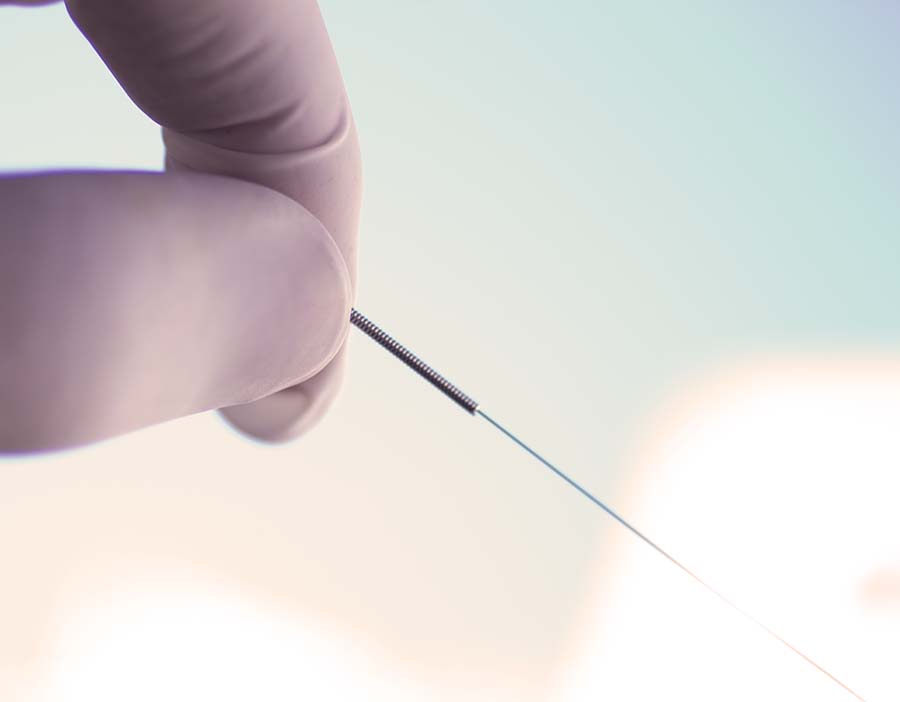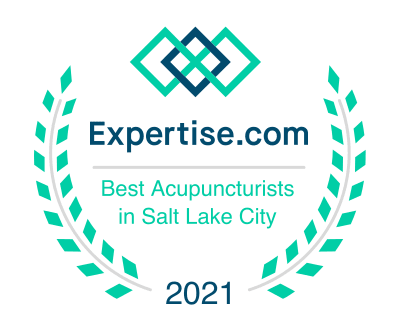Acupuncture and Dry Needling

What is Dry Needling?
Dry needling is a Western Medicine therapeutic treatment which has been around since the 1980s. It is used primarily by physical therapists or other providers to address soreness, pain and movement issues associated with myofascial trigger points, according to Cleveland Clinic and Mayo Clinic. The procedure involves the use of a thin filiform needle that is “dry” – meaning no medication is applied – to penetrate the skin to stimulate underlying myofascial trigger points, as well as muscular and connective tissues. This can decrease muscle tightness, increase blood flow, and reduce pain. Practitioners are required to take take 27 or 54 hours of post-graduate, continuing education to practice dry needling.
What is the difference between Acupuncture and Dry Needling?
Acupuncture, a traditional Chinese medicine practice, with thousands of years of practice and application, offers holistic health benefits including stress relief, immune system enhancement, and balance of the body’s energy pathways (meridians). These benefits are not typically addressed by dry needling, a more localized treatment for muscle pain and stiffness.
FAQs about Dry Needling
Yes, in addition to earning a master’s degree in Oriental Medicine from OCOM in Portland, Oregon and traveling to China to continue her education at Nanjing University, Rachel also took a weekend course to become certified in Dry Needling.
IS DRY NEEDLING THE SAME AS TRIGGER POINT DRY NEEDLING?
Dry needling is often referred to as “trigger point dry needling” as it targets the body’s trigger points. A trigger point is a taut band of skeletal muscle within a larger muscle group. Trigger points can be tender to the touch. Touching a trigger point may refer pain to other parts of the body.
Dry needling and acupuncture are not the same, although they both involve the use of thin needles. The key difference lies in their approach and purpose. Acupuncture is a traditional Chinese medicine practice that targets points along the body’s energy pathways or meridians to balance the body’s energy flow, also known as Qi.
On the other hand, dry needling is a modern treatment technique often used by physical therapists. It targets specific trigger points in the muscles, which are often the source of pain, to release tension and induce a healing response. Moreover, the duration of needle placement tends to be shorter in dry needling compared to acupuncture.
Training required to administer each form of treatment also differs, with acupuncture requiring more extensive training.
DOES THE ACUPUNCTURE TREATMENT AND THE DRY NEEDLING TREATMENT USE THE SAME TYPE OF NEEDLE?
The sole commonality between dry needling and acupuncture lies in their shared tool: a slender monofilament needle. However, the application of this tool varies between the two methods. Acupuncture, rooted in traditional Chinese medicine, employs needles to interact with “energy fields or channels”, whereas dry needling does not.
WILL DRY NEEDLING HURT?
The sensation of dry needling can vary greatly from person to person. Some patients may only feel a slight pinch or cramp, while others describe the procedure as intensely painful but also beneficial for relieving muscle spasms. It’s common to experience a deep cramping sensation in the muscle where the needle was inserted, and there might be some post-treatment soreness. However, the procedure is generally manageable and any discomfort tends to decrease with subsequent treatments.




